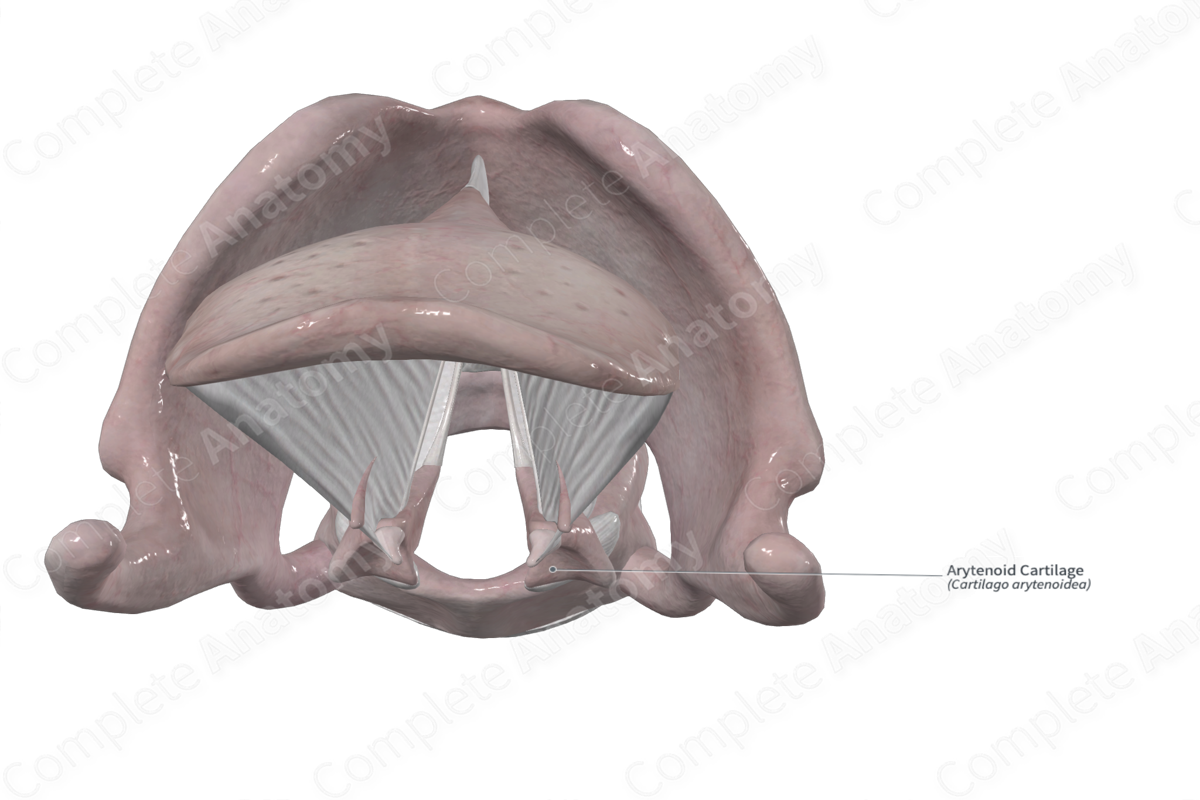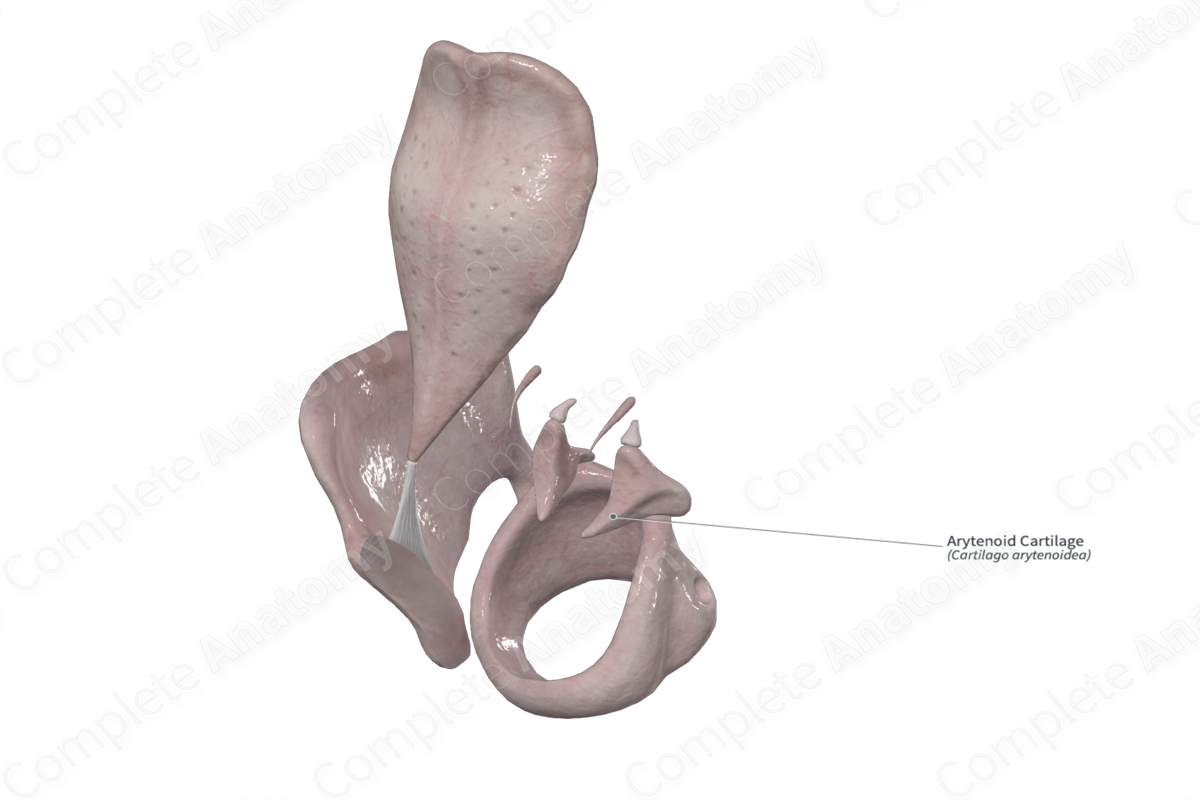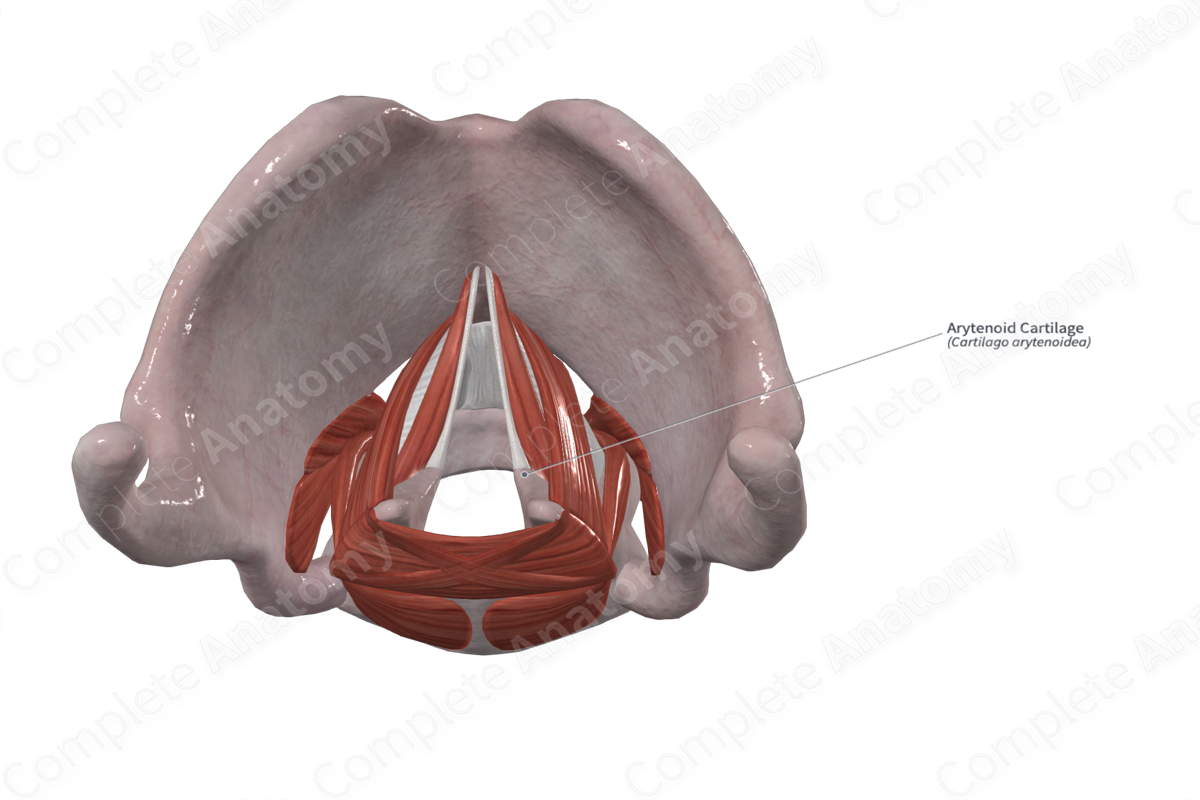
Structure
The arytenoid cartilages are paired segments that are connected to the superior margin of the cricoid lamina posteriorly via the cricoarytenoid joint.
Although these hyaline cartilages are small, they are relatively complex in structure and function.
Key Features & Anatomical Relations
Each arytenoid cartilage has three surfaces, a base, and an apex, thus giving it a pyramidal shape.
The apex of the arytenoid cartilage adjoins the corniculate cartilage. The base is connected to the cricoid cartilage via the cricoarytenoid joint.
The three surfaces are the posterior, the anterolateral, and the medial surfaces. The anterolateral surface also contains, near its apex, the vocal process to which the vocal ligament attaches. The medial surface has a prominence named the muscular process, which is the site of attachment of several intrinsic laryngeal muscles.
Learn more about this topic from other Elsevier products





